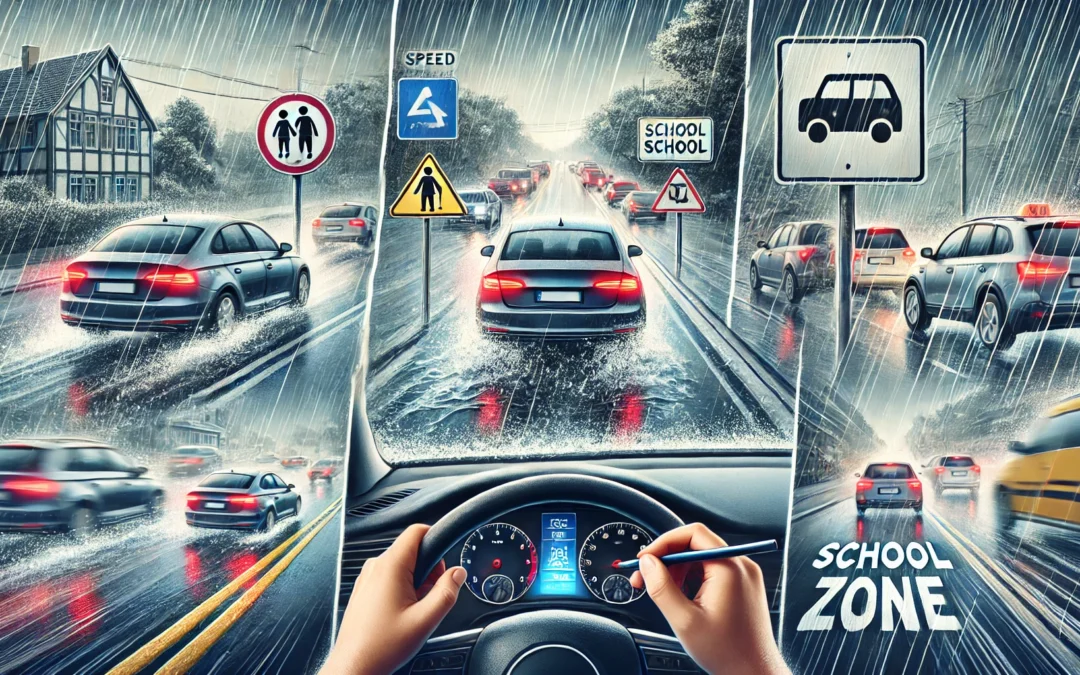How to Manage Your Speed for Safer Driving
Driving at the right speed isn’t just about avoiding speeding tickets—it’s about maintaining control and safety on the road. Managing your speed according to the conditions around you is one of the most essential aspects of responsible driving. Whether it’s heavy traffic, wet roads, or tricky turns, adjusting your speed can prevent accidents and keep you and others safe. Below are key considerations to help you manage your speed effectively and reduce risks.
1. Follow the Basic Speed Law
California’s Basic Speed Law states that you should never drive faster than is safe for the current road conditions. While posted speed limits provide a guideline, it’s important to adjust your speed based on several factors:
- Traffic levels: In busy areas with many vehicles, reduce your speed to allow for sudden stops or turns.
- Road conditions: A road may be uneven, wet, or narrow, requiring slower speeds to maintain control.
- Pedestrians and cyclists: When approaching crosswalks or bike lanes, slow down to prevent collisions.
- Weather conditions: Whether it’s rain, fog, or wind, poor weather significantly reduces visibility and road traction, making slower driving critical.
Adhering to the Basic Speed Law helps ensure that you can stop or maneuver safely, no matter what you encounter on the road.
2. Adapt to Changing Conditions
Different environments require different speeds, even if the speed limit remains the same. Always adapt to the following:
- Wet or icy roads: Roads become slippery during rain or snow. Reducing your speed by 5-10 mph in such conditions can prevent hydroplaning.
- Poor visibility: If you can’t see well due to fog, rain, or darkness, lower your speed so you can react to obstacles in time. Use your headlights and keep a larger distance between vehicles.
- Curves and intersections: Slow down before reaching curves or intersections where it’s harder to see oncoming traffic or pedestrians.
By adapting to conditions, you ensure that you’re ready for unexpected hazards, which can help avoid serious accidents.
3. Reduce Speed in High-Risk Areas
Certain areas, like school zones, residential neighborhoods, and construction sites, often require slower speeds even if the speed limit isn’t explicitly lower. In these areas:
- Drive below the speed limit if you see children, pets, or pedestrians.
- Be mindful of signs indicating reduced speed limits near schools or construction zones.
- Watch for sudden stops: In residential areas, cars may stop suddenly or pull out of driveways unexpectedly.
Driving at reduced speeds in high-risk zones provides more reaction time to prevent collisions.
4. Consider Traffic Flow
In heavy traffic or congested roads, speeding doesn’t save time and only increases the risk of accidents. Instead:
- Maintain a steady speed and avoid frequent lane changes.
- Go with the flow: Stick to the speed of the traffic around you, even if it’s slower than the posted limit.
- Stay patient: Avoid the temptation to weave in and out of lanes to gain a few seconds. This can often result in collisions.
Maintaining a consistent speed that matches traffic flow helps reduce road rage and ensures a smoother journey for everyone.
5. Handling Emergencies
In sudden road emergencies, your ability to control your speed can make a difference. If you encounter a hazard, don’t brake suddenly. Instead:
- Gradually slow down by easing off the accelerator.
- Signal your intentions by lightly tapping your brake pedal to alert drivers behind you.
- Stay in control: If you need to change lanes or avoid an obstacle, do so smoothly at a reduced speed.
Managing speed is not just about following rules; it’s about staying adaptable and alert to everything happening around you on the road.






Recent Comments